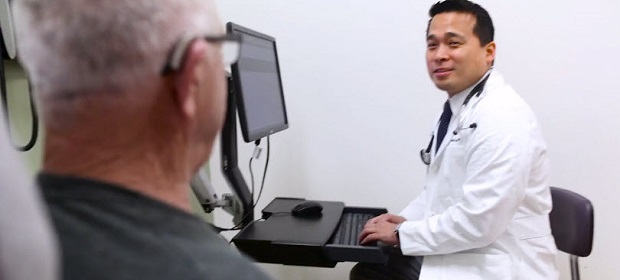At the Oliver Wyman Health Innovation Summit, John Kao, CEO and president of Alignment Healthcare, will join a Main Stage discussion on what is necessary to achieve outsized results with population health management. Here, he provides a preview and shares his views on what it will take to realize wide-scale adoption of population health models.
Oliver Wyman Health: What is the mission of Alignment Healthcare?
John Kao: Alignment Healthcare is focused on setting a new standard by which care is delivered to seniors – particularly the seniors who are frail and who have multiple chronic conditions – through digital health technologies and care coordination.
OWH: How do you define “population health”?
JK: There are so many definitions, depending on who you ask. Population health generally means taking care of a set group of a community – a specific population – by providing wellness and preventive care; managing acute care episodes and other clinical needs along the way; and then taking financial risk for the individual holistically, rather than episodically.
For me, population health is something I see in action every day in our offices in Orange, Calif. From our Command Center, which resembles something you would see at NASA control, I can see multiple monitors and screens that reflect our most at-risk members’ health status. Our clinical teams monitor these members’ health status, tracking specific biometric data collected every day from our members’ at-home monitoring technology and moving into action when needed. Maybe the member can be helped via telemedicine or just over the phone, or perhaps he or she needs to come into the clinic that day and visit with a doctor. This immediate action, we have seen, saves unnecessary hospitalizations and emergency room visits. To me, population health still requires taking care of one human being, one person at a time.
OWH: Many companies that are successful in driving population health find it difficult to scale. What is unique about the Alignment model that makes it scalable?
JK: Unlike other companies, we are a collaborative model, working together with health systems, physician practices, and insurers to improve how the entire system approaches healthcare of the Medicare population. This collaboration, combined with technologies that allow us to review 100,000 charts instantly and do virtual rounds with care teams of ours and our partners, is what we believe makes Alignment’s model scalable.
OWH: What is the next phase in evolution of population health? And when do you predict we will start to see wide-scale adoption of population health?
JK: In the past four years, we have seen 100 percent of health systems consider getting into population health, i.e., taking on risk for certain populations. I think hospitals have made strategic decisions about what to do, and most will adopt population health over the next five to 10 years. It will be slow-going, but people are waking up to the fact that Medicare Advantage is the right long-term answer, and the ACOs, MSSP, and MACRA models are all wide ends of the funnel leading to Medicare Advantage.
OWH: You previously served as president of CareMore, a health plan and healthcare delivery system that focuses on the health needs of seniors. What lessons from that experience are you applying at Alignment?
JK: CareMore was a great experience for me. It validated that you can replicate a care delivery model in different markets. What we have done at Alignment is what we call “Version 2.0,” or the next generation of CareMore. We have integrated advanced technology solutions that allow us to scale much better than we did before. We know it works and are working with health plan and health system partners that want a better way to deliver coordinated care to seniors.
OWH: What does the future of healthcare look like to you?
JK: There are 50 million seniors in the country now, increasing to 90 million in the next 25 years. The baby boomers started turning 65 in 2011, and 10,000 more turn 65 every day. Twenty percent of these seniors will have some type of chronic condition that can lead to secondary complications, so it is vital to them and to CMS that we can implement this model. Our model focuses on care coordination for the 20 percent of the population that costs 80 percent of the money.
There are several debates going on about payment models—bundled payments, MACRA, MIPS, Next Generation ACO, etc. We happen to think that Medicare Advantage is the right payment model. Medicare Advantage is designed to encourage better quality at lower costs, which is what we need. This will evolve to populations beyond just seniors. A 45-year-old with diabetes, congestive heart failure and chronic obstructive pulmonary disease (COPD) has the same needs as a 75-year-old with the same conditions. The lessons we have learned in Medicare will be applied to non-seniors.
OWH: What advice do you have for other healthcare innovators?
JK: There are several good health IT and care delivery companies out there that are good point solutions. My advice is to understand the healthcare supply chain, or the new buzz word, “ecosystem.” Understand what components are required to succeed and then provide a point solution to make that piece of the supply chain better. Alignment wants to build the senior ecosystem for our members and partners by integrating all the best-in-class point solutions into our workflows to provide the best experience we can for our members and partners.
